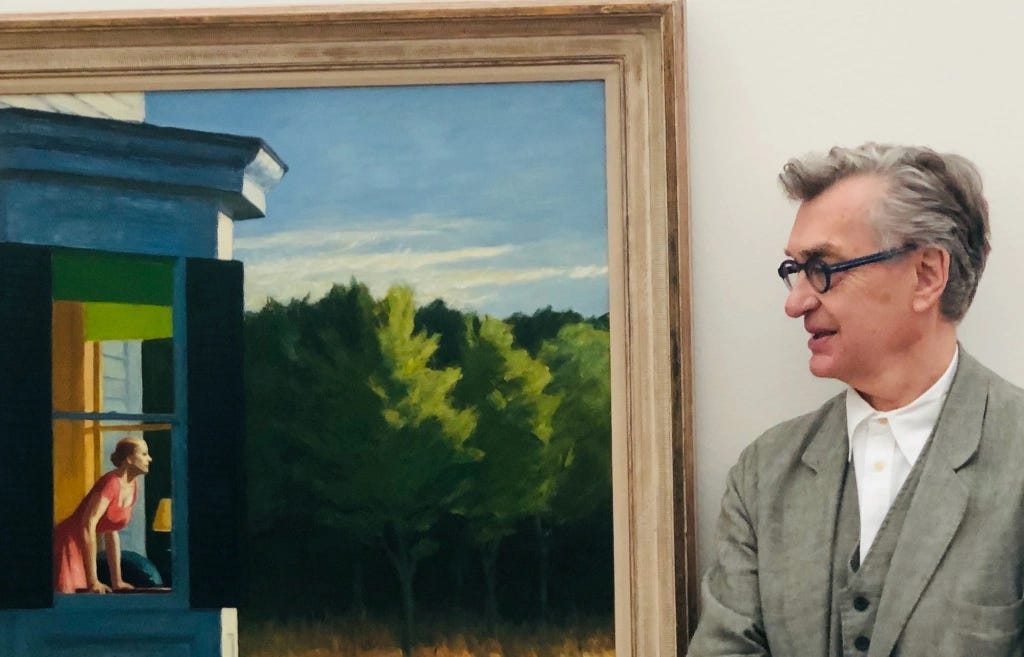Silent Spaces: The Shared Solitude of Wim Wenders and Edward Hopper
How the quiet tension in Hopper's paintings finds its cinematic expression in Wenders' films
Wim Wenders at the opening of the Beyeler exhibition on 24 January 2020 in front of Edward Hopper’s Cape Cod morning, 1950, photo Michele Laird
Wim Wenders, a German filmmaker known for his visually striking and emotionally resonant films, has long drawn inspiration from a wide array of artistic influences. One of the most prominent among these is American painter Edward Hopper. While Wenders' films may span genres and continents, Hopper’s work, characterized by its striking compositions, isolated figures, and meditations on modern life, is a central aesthetic and thematic touchstone. This article explores how Hopper's paintings influenced Wenders' filmography, particularly how both artists explore themes of isolation, urban alienation, and the contradictions of the American Dream.
Background of Wim Wenders
Born in 1945 in Düsseldorf, Germany, Wim Wenders emerged as a leading figure of the New German Cinema movement in the 1970s. His early films, such as The Goalie's Anxiety at the Penalty Kick (1972) and Kings of the Road (1976), showcased a keen eye for landscapes, emotional depth, and existential wandering. As a director, Wenders is known for both his narrative films and his documentaries. Notable works like Paris, Texas (1984), Wings of Desire (1987), and Buena Vista Social Club (1999) have received international acclaim for their unique visual style and depth of feeling. Wenders' exploration of themes like dislocation, memory, and personal identity often manifests in a profound sense of place, making him a visual storyteller with a painter's eye.
“All the paintings of Edward Hopper could be taken from one long movie about America, each one the beginning of a new scene.
-Wim Wenders
Wenders' connection to America, a country where he spent significant periods, runs through many of his films, especially Paris, Texas, which explores the vast American landscape and the emotional terrain of its characters. His visual sensibilities are deeply tied to this land of contrasts, and this is where his appreciation for the work of Edward Hopper begins to shine through.




